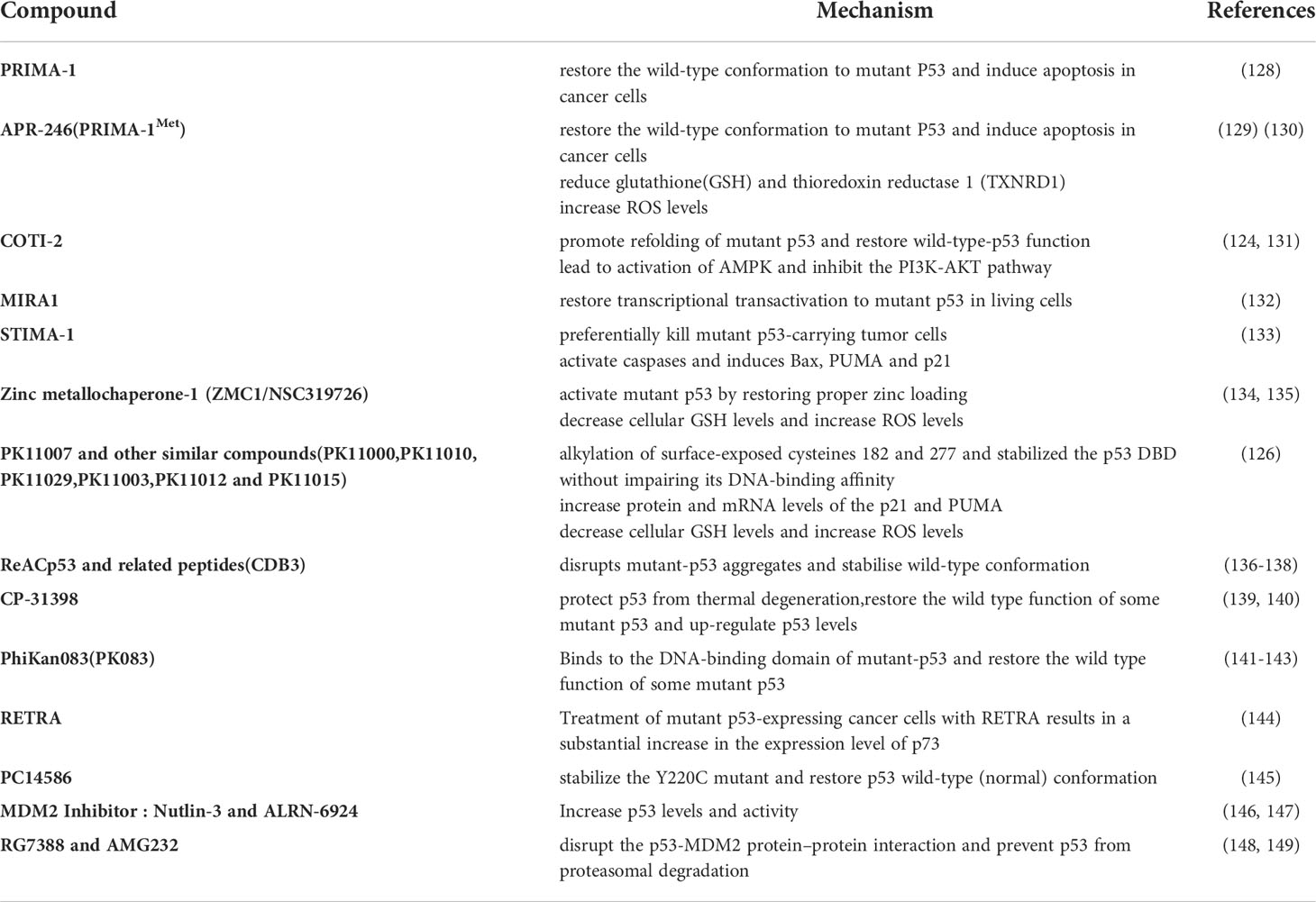Current insights into the regulation of programmed cell death by TP53 mutation in cancer
- 1Department of Clinical Laboratory, North China University of Science and Technology Affiliated Tangshan Maternal and Child Health Care Hospital, Tangshan, China
- 2Department of Clinical Laboratory, North China University of Science and Technology Affiliated Hospital, Tangshan, China
A Corrigendum on
Current insights into the regulation of programmed cell death by TP53 mutation in cancer
by Su Y, Sai Y, Zhou L, Liu Z, Du P, Wu J and Zhang J (2022) Front. Oncol. 12:1023427. doi: 10.3389/fonc.2022.1023427
In the published article, there was an error in Table 1 as published. The order of the references in Table 1 was incorrect. The corrected Table 1 appears below.
The authors apologize for this error and state that this does not change the scientific conclusions of the article in any way. The original article has been updated.
Publisher’s note
All claims expressed in this article are solely those of the authors and do not necessarily represent those of their affiliated organizations, or those of the publisher, the editors and the reviewers. Any product that may be evaluated in this article, or claim that may be made by its manufacturer, is not guaranteed or endorsed by the publisher.
Keywords: TP53 mutation, ferroptosis, pyroptosis, apoptosis, autophagic cell death, cancer
Citation: Su Y, Sai Y, Zhou L, Liu Z, Du P, Wu J and Zhang J (2022) Corrigendum: Current insights into the regulation of programmed cell death by TP53 mutation in cancer. Front. Oncol. 12:1071831. doi: 10.3389/fonc.2022.1071831
Received: 17 October 2022; Accepted: 31 October 2022;
Published: 11 November 2022.
Edited and Reviewed by:
Jin Zhang, University of Mississippi Medical Center, United StatesCopyright © 2022 Su, Sai, Zhou, Liu, Du, Wu and Zhang. This is an open-access article distributed under the terms of the Creative Commons Attribution License (CC BY). The use, distribution or reproduction in other forums is permitted, provided the original author(s) and the copyright owner(s) are credited and that the original publication in this journal is cited, in accordance with accepted academic practice. No use, distribution or reproduction is permitted which does not comply with these terms.
*Correspondence: Jinghua Wu, d3VqaEBuY3N0LmVkdS5jbg==; Jinghua Zhang, amh6aGFuZ190ZUAxNjMuY29t
 Yali Su1
Yali Su1 Jinghua Wu
Jinghua Wu